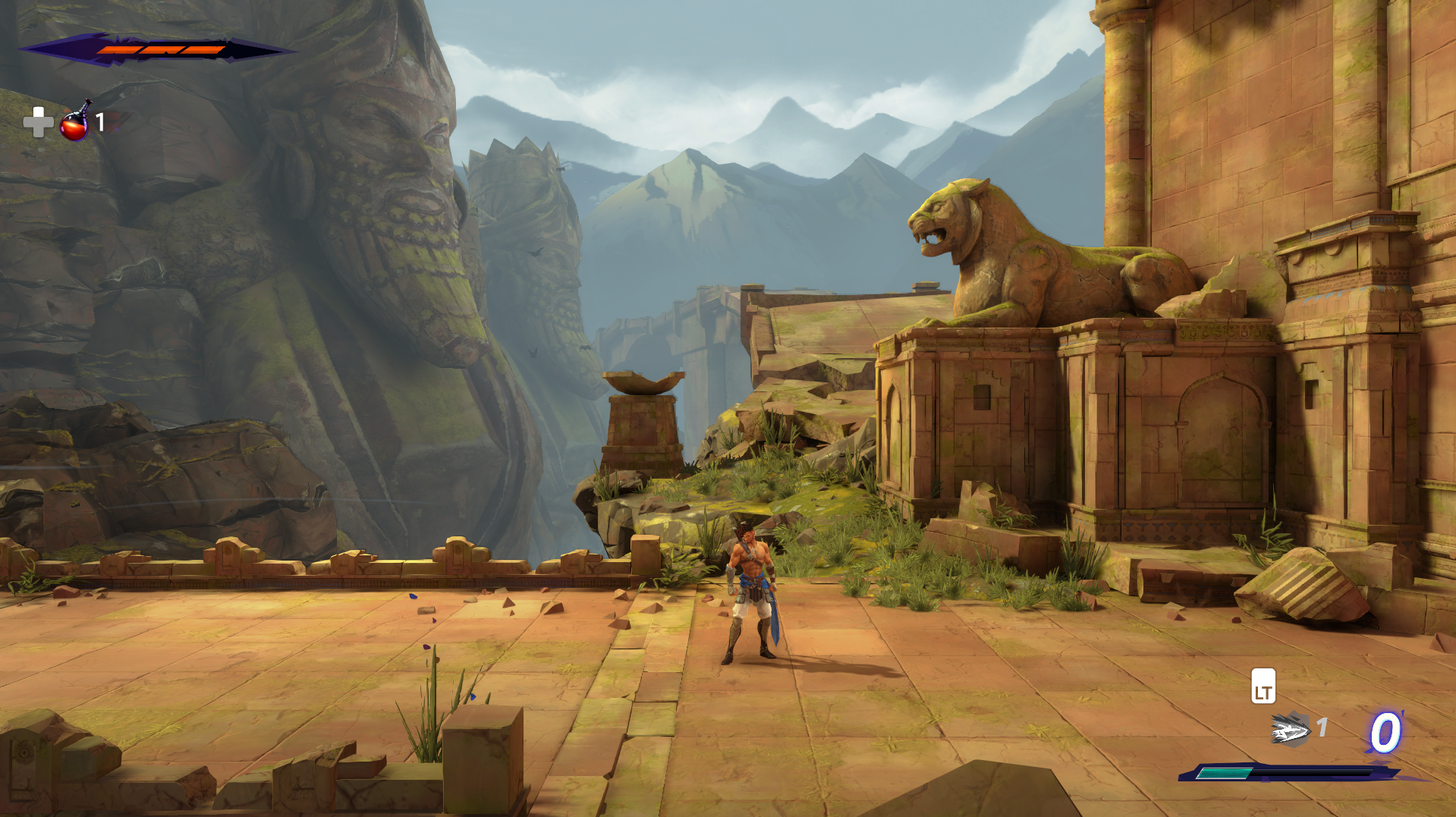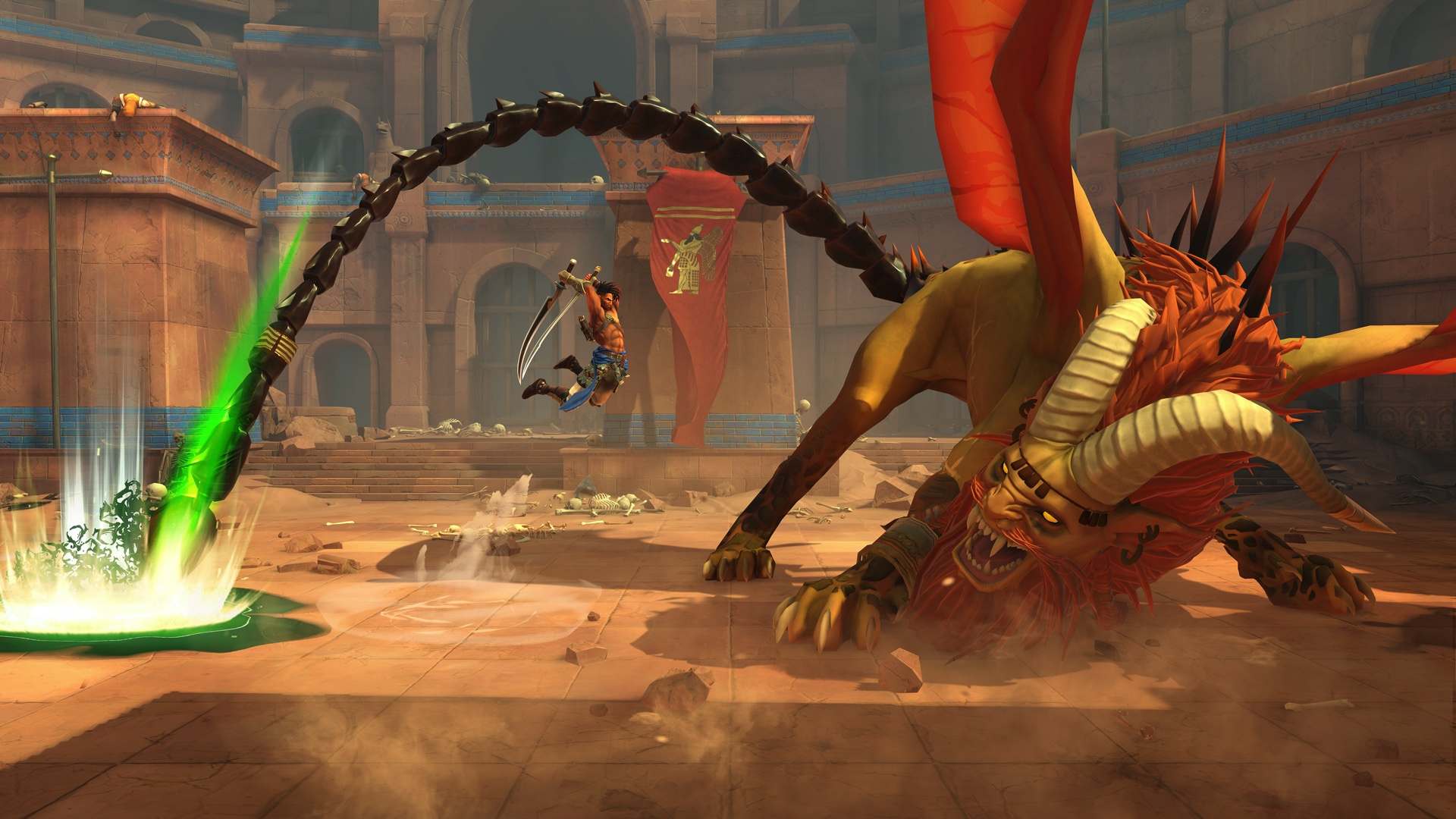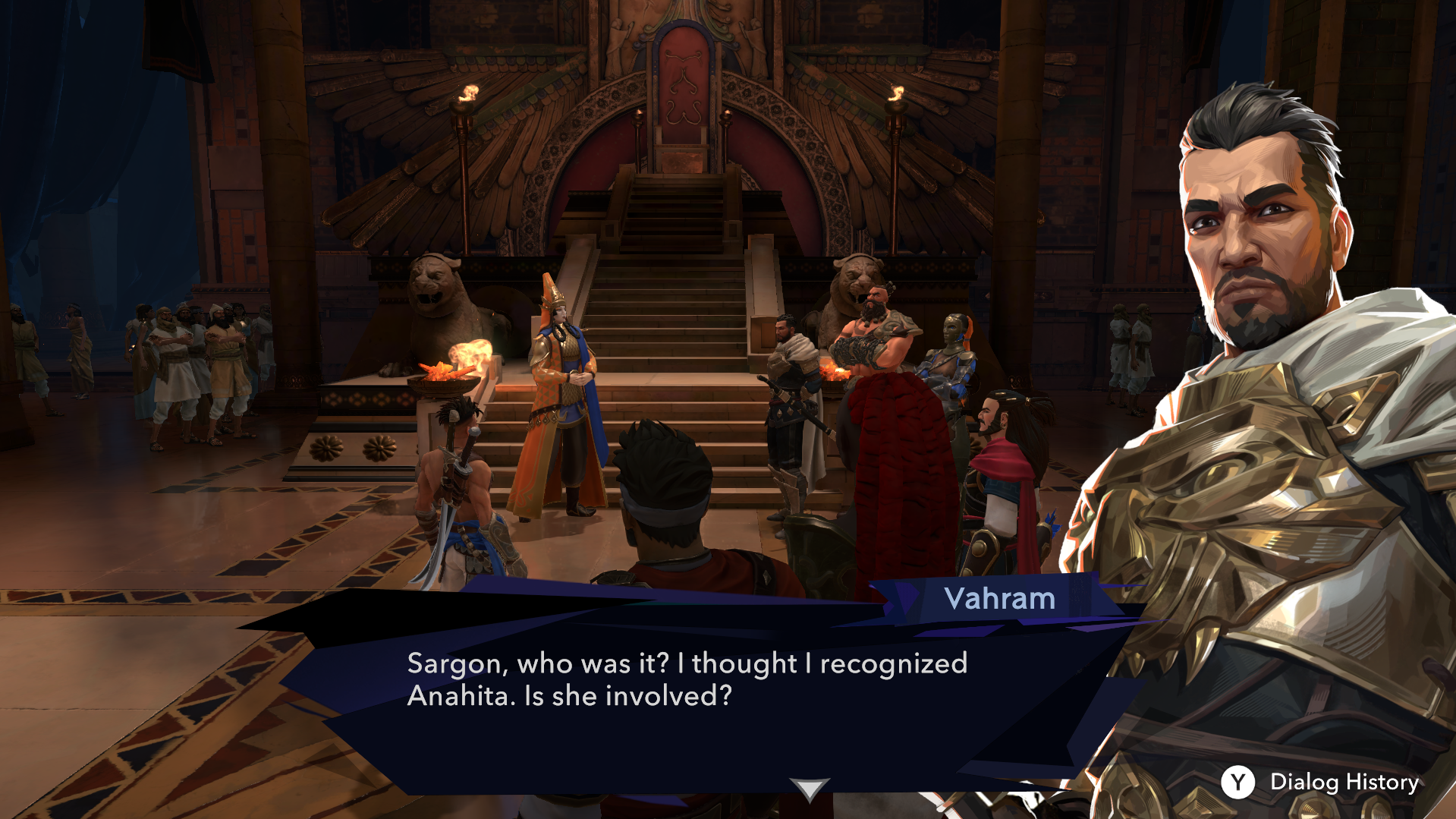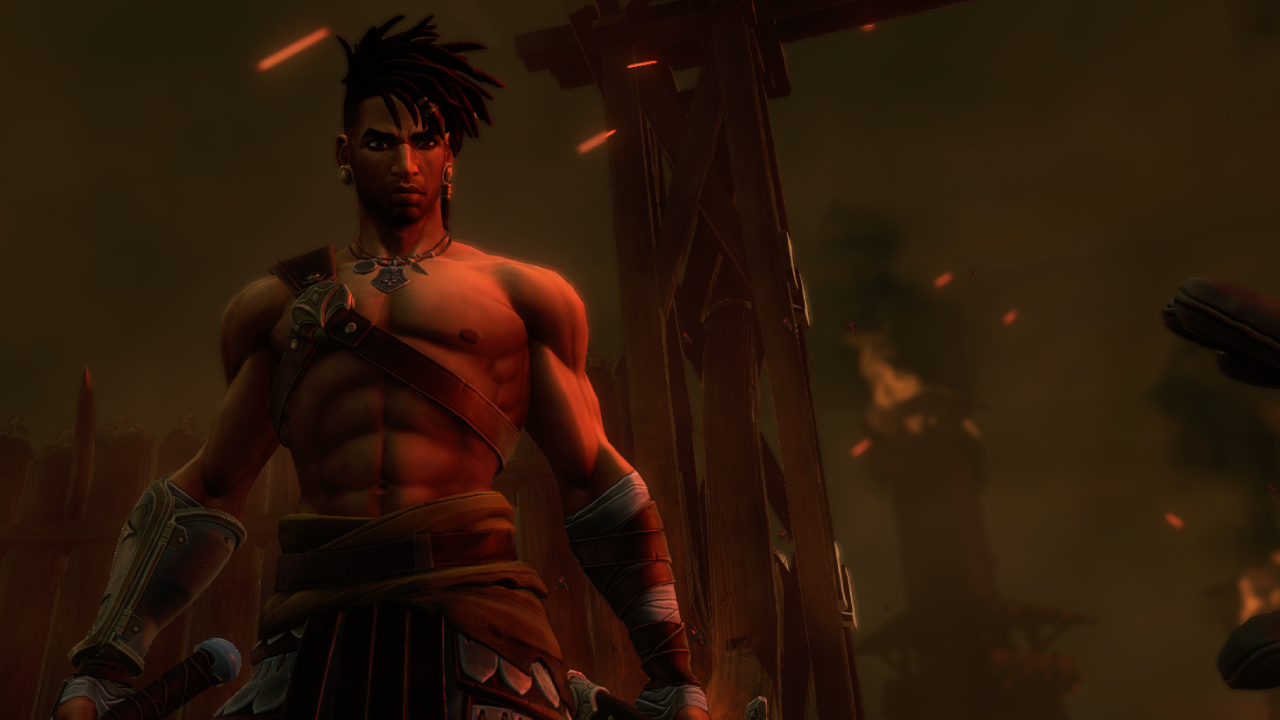This is now the fourth time (by our count) Prince of Persia has been revamped, overhauled, and fundamentally changed.
After years of requests, developers Ubisoft returned to the series’ origins, a side-scrolling adventure to capitalise on gaming’s renewed fervour for the design of the bygone days. Just as “boomer shooters” have returned, so have the three heavenly pillars of explore, fight, and evolve built by Super Metroid and Castlevania returned to the mainstream.
This turn at Prince of Persia, following the beautiful but mediocre Prince of Persia (2008), adheres to these three pillars like a sweaty Jake Gyllenhall clings to a shiny, sand-filled MacGuffin. With a brand new prince, and a brand new look, The Lost Crown is an earnest attempt from one of the world’s largest gaming corporations – or at least the team set aside to make it, as the main development focuses on the next Assassin’s Creed or Far Cry.
It springs forth like a fresh oasis breeze from Ubisoft’s dead horse catalogue of titles, and from the studio’s dark history of alleged employee abuse, and ridiculous statements from its c-suite that gamers should get used to not owning the games they pay for.

We prefer our Prince with a bit more guy-liner, a bit more emo and with some electric guitars blaring in the back, but the shiny new Sargon is a solid stepping stone for the legacy of the PS2-era Prince, just like The Lost Crown comfortably takes the series forward with exquisite game design, even if it doesn’t innovate all that much.
Explore
Sargon, who doesn’t actually start the game as a “prince” at all, is a member of the Immortals – the greatest warriors Persia has to offer, who are tasked to defend the kingdom and ensure that Prince Ghassan, the actual prince, manages to ascend to the throne while evil powers conspire against the kingdom.
The game begins with a short, but explosive introductory cinematic that sets up the Immortals as super-powered beings and then throws you into the fight. No longer is the camera behind the prince, but instead like the original games from 1989, The Lost Crown is a side-scroller and a deceptively linear one at that.

Ubisoft’s art team is flexing all over the screen, as the game makes it clear from the outset that style is the driver with this one. The game’s complex and multi-floored levels are detailed wonderfully, with glorious painted backgrounds and beautiful textures. The art style is reminiscent of the 2008 turn in the series, turning away from realism for more cartoonish characters, all sticking to the ancient Persian/Sumerian theme.
The world of Prince of Persia: The Lost Crown is a place that history forgot, eldritch magic is real, and heroes become legends. Every new level and setpiece is a welcome one, with a varied palette of environments and challenges to match them. The environment is also cleverly used to tell the story of the area you are in. Where skeletons linger, and statues float in massive broken pieces, you understand that necromancy is afoot.
Sargon blisters his way through these levels with your slide and sprint button (with more unlockable transversal powers out there), because what may look like a labyrinth is in fact only four possible directions, and areas change quickly because of this. No, you can’t go through that tunnel even if Sargon should be able to.
In The Lost Crown, you go left, right, up and down, and while the platforming increases in complexity and difficulty as the game progresses, it builds it up in a way that keeps you grounded in the basics. This is the throughline of the game, keep it in mind.

There are also hidden secrets in levels, and exploration is encouraged. Many of these hidden locations and items will require you to unlock new powers and items as you progress to access them, a favourite trope of the genre.
You will quickly become familiar with the other Immortals, who we wish were a little less stereotypical – you have the big heavy, friendly guy, and the archer guy with one eye, and the Amazon warrior woman and the mage and, well, we’ve seen it all before. This would have been the perfect place to reach deep for more unique heroes using the Persian theme.

The side characters, that push the storyline forward, are also not the most memorable. The story itself unfolds as you progress through the game, like running through a long bridge, stopping every now and then for a fight or a new story beat. But the story isn’t the star of the show. It’s the combat.
Fight
You start the game with a five-hit combo. X – X – X – X – X.
A simple five-hit combo, by mashing X on the gamepad, and that’s it. No other combo. “I can’t believe this is all you get,” I thought, foolishly. Remember what I wrote about being grounded in the basics? In an effort of genius game design, the five-hit combo organically expands into a deep and complex combat system as you progress, unlock new items, and new powers.
At the start of the game, you brainlessly pulp the bad guys, by the second main area you will enter a hell of pain and punishment. The game ruthlessly holds up a mirror to your own failures in paying attention to the lessons it has so kindly taught you – and that’s on the normal difficulty.
There is the main five-hit combo, and then there is the parry – influenced by FromSoftware’s Sekiro: Shadows Die Twice – and the dodge slide. But the dodge slide also translates into a launcher so you can juggle enemies now. The parry also becomes a way to enact a stylish finisher on your opponents. There is also a projectile you get by holding down the X button, all the while you are jumping around, dodging projectiles and attacks.
The directions influence your attacks and you quickly become a whirlwind of steel. Slashing with your starter combo, throwing projectiles, launching enemies, catching them in finishers, and then you get your Super Saiyan form.

When your Athra gauge fills by killing enemies, you can perform an Athra Surge to take down multiple enemies at once. Sargon’s eyes glow, and his energy surges around his body. You unlock new types of surges as you progress.
There is something very God of War (2018) about The Lost Crown, probably because the PlayStation exclusive also relies on the same three-pillar formula.
By the time you get to the middle of the game, the combat is your muse. You push yourself to the limit as more and more enemies rush you, increasingly throwing new mechanics at your beleaguered form. It is a question of “can you keep up?” and “are you sure you have the basics down?” Since everything builds from the five-hit combo, you should be able to handle the challenges as they become more difficult, especially since you constantly unlock powers and items to make your life easier.
But the enemies get stronger too, and the boss fights grow in scale and complexity. I found myself skipping through the dialogue and running past my companions to just get into the fight sooner. There is something special here. Who cares about the political turmoil, or Sargon’s murky lineage. There are foul beasts ahead, and evil-doers that yearn for the justice of my blades.

Evolve
Every new area and new slate of enemies is also accompanied by new equipment, that changes the look of your model, or new items – new health potions, new amulets, new weapons like the bow that your Y button was waiting for.
You also end up buying these items at vendors as you unlock new currencies dropped by your enemies. There is so much new to be had just by going forward, and like Diablo IV, the constant loop of fighting, exploring and finding new things to make you better and make your life easier keeps you playing.
The challenge evolves with the player, as you get better, the game demands more and gives you more tools to best these challenges. You end up with a dense Metroidvania, with deep, frantic combat. Ever evolving, but as the player is introduced first to incredibly basic systems the game keeps itself accessible even for beginners.

Ubisoft’s latest Prince of Persia effort, more than its predecessors, is made to introduce and familiarise players with the three-pillar formula. I wouldn’t be surprised if loads of players start with The Lost Crown, and then evolve to titles like Hollow Knight, Blasphemous, Dead Cells and the many others out there.
Prince of Persia: The Lost Crown – Verdict
Fantastic combat is the focus of a beautiful Metroidvania experience, one that is built to be accessible even for gamers who have never touched the genre. Prince of Persia: The Lost Crown is a brand new story, with a brand new prince. Thunder through somewhat linear levels using new and better ways to traverse the environment searching for your next fight while wonderful visuals provide a treat for the senses.
The story takes second place to the gameplay and its time-tested formula, and so does everything else. Not to say that Ubisoft has at any point skimped on an overall high-quality experience.
You can grab Prince of Persia: The Lost Crown from the Ubisoft Store for R899.
FINAL SCORE: 8 OUT OF 10.

